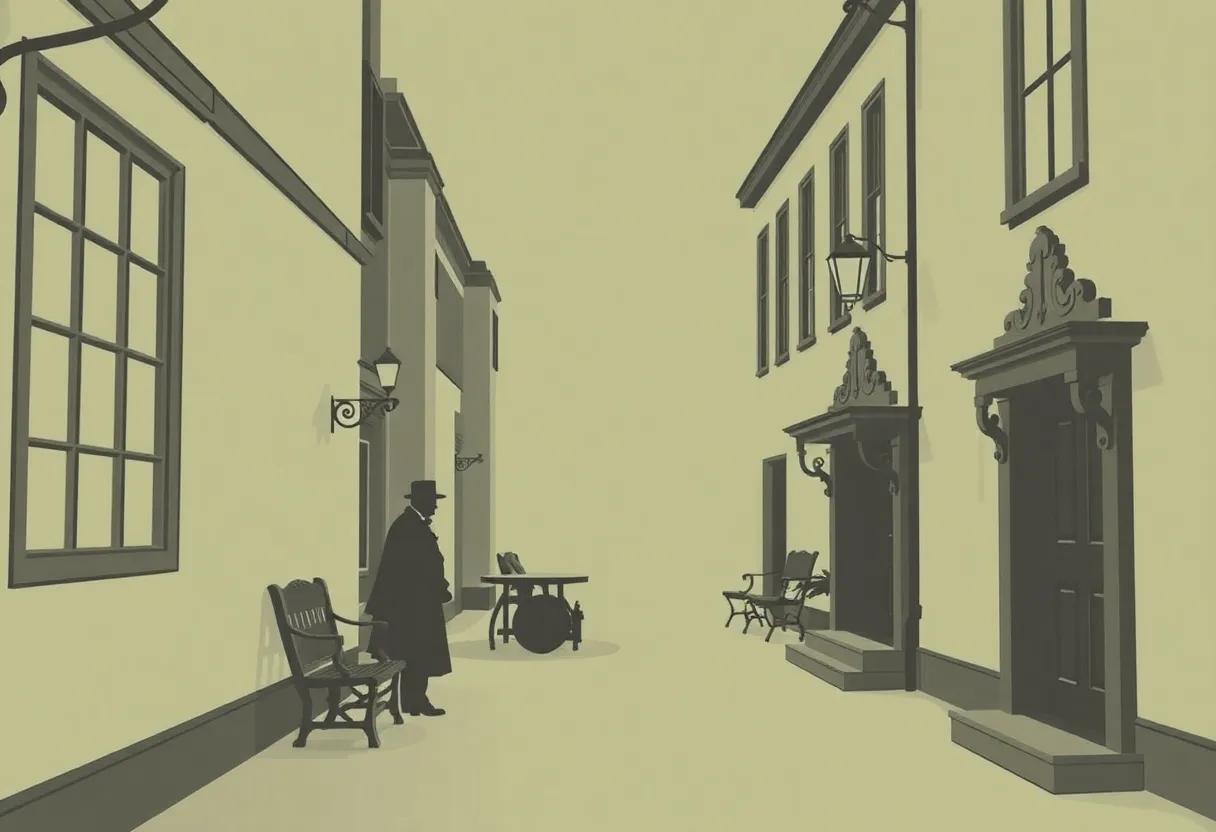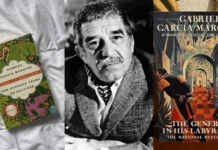In teh vast landscape of Victorian literature, few works capture the intricate interplay of social critique and human endurance quite like Charles Dickens’ Nicholas Nickleby. The new title, Unveiling Dickens’ Nicholas Nickleby: A Tale of Resilience and Reform, invites readers to explore this classic novel through a fresh lens-one that highlights the enduring spirit of its protagonist amid a world rife with injustice and change. This review delves into how the book reexamines Dickens’ narrative,uncovering nuances of perseverance and the quest for social betterment that continue to resonate today.
Exploring the Social Critique Embedded in Nicholas Nickleby and Its Relevance to Contemporary Issues
Charles Dickens wove a compelling narrative in Nicholas Nickleby that transcends its Victorian setting, boldly addressing the socio-economic inequalities of his time. Through vivid depictions of greed, cruelty, and ignorance-especially within the exploitative school system-Dickens exposes how unchecked power harms the vulnerable. The novel’s characters, from the resilient Nicholas to the oppressed Smike, embody the struggle for dignity amidst injustice. Their experiences echo today’s battles against systemic abuses, reminding us that vigilance and compassion remain crucial to social progress.
Modern readers can draw direct parallels between Dickens’ critique and contemporary issues such as:
- Educational Disparities: The novel’s depiction of harsh management and neglect in schools resonates with ongoing debates about inequality in education access and quality.
- Child Labor and Exploitation: Though outlawed in many places, exploitative labor practices persist globally, making Dickens’ condemnation relevant.
- Social Mobility Barriers: Nicholas’ quest for a better life mirrors current challenges faced by marginalized groups seeking economic upliftment.
| Theme | Victorian Context | Contemporary Parallel |
|---|---|---|
| Exploitation | Child labor in schools and factories | Global labor rights abuses |
| Education | Neglected boarding schools | Educational inequality |
| social Justice | Limited legal protections | Advocacy for systemic reform |
The Art of Character Development and Emotional depth in Dickens’ Tale of Compassion and Justice
Charles Dickens masterfully crafts multi-dimensional characters who embody both virtues and flaws, creating a rich emotional tapestry that drives the narrative. In nicholas Nickleby, the protagonist’s journey is not merely a plot device but a profound exploration of resilience amid hardship. Dickens breathes life into his characters through intricate backstories and nuanced interactions, allowing readers to witness their growth from vulnerability to strength. This emotional depth fosters empathy, making Nicholas’s battles against cruelty and injustice resonate beyond the pages. Through subtle gestures, heartfelt dialogues, and internal conflicts, Dickens invites us to experience the characters’ triumphs and tribulations as intimately as our own.
At the core of this emotional resonance lies Dickens’s clever use of contrast and symbolism. He juxtaposes the oppressive environments with moments of kindness and hope, highlighting the stark realities of victorian society while celebrating human dignity. Consider the following key elements that enrich the character development:
- Complex antagonists who reveal the shades of human nature beyond villainy
- Supportive secondary characters that serve as emotional anchors
- Symbolic settings that mirror the inner turmoil of characters
| Character | Emotional Trait | Symbolism |
|---|---|---|
| Nicholas Nickleby | Steadfast empathy | Light in darkness |
| wackford Squeers | Cruel authority | rotten institution |
| Kate Nickleby | Silent strength | Hope amid despair |
How Dickens Crafts a Vivid Victorian Setting to Enhance the Story’s Themes of Struggle and Hope
Charles Dickens masterfully constructs the streets, homes, and workhouses of Victorian England with a level of detail that transports readers directly into the era’s gritty realities. Through vivid descriptions of fog-laden alleys, overcrowded lodgings, and bustling marketplaces, he creates a world were hardship is palpable, yet the human spirit remains unyielded. This rich backdrop serves not merely as setting but as a mirror reflecting societal inequities-where the laughter of children contrasts the harsh clang of the industrial age, and the warmth of family bonds defies cold poverty.
Key elements Dickens employs to evoke this setting include:
- Atmospheric language, painting sensory-rich scenes of both despair and fleeting joy.
- Symbolic locations, such as grim boarding schools representing institutional cruelty.
- Dynamic social contrasts, highlighting the divide between the privileged and the oppressed.
| Element | Example in Nicholas Nickleby | Symbolism |
|---|---|---|
| Settings | Dotheboys Hall | Institutional oppression and neglect |
| Atmosphere | London fog and crowded streets | Confusion and societal entrapment |
| Social contrast | Wealthy estates vs. grim lodging houses | Economic inequality |
Narrative Techniques That Drive the Story Forward and Keep Readers Engaged Through Complex Plot Twists
Charles Dickens masterfully employs a tapestry of narrative techniques that not only propel the story but also weave complexity into the plot without overwhelming the reader. One of his most effective tools is the use of interconnected subplots, which enrich the main narrative by introducing characters and conflicts that mirror or contrast Nicholas’s own journey. This layered storytelling keeps readers constantly reevaluating alliances and motivations. Additionally, Dickens incorporates foreshadowing with subtle hints scattered throughout the chapters, creating an anticipatory tension that urges readers to piece together clues before the plot twists fully unfold. His skillful submission of character-driven conflict ensures that every twist is grounded in believable decision-making, lending emotional weight to even the most unexpected turns.
Moreover, Dickens uses a variety of pacing techniques designed to balance intricate plot developments with moments of relief and reflection. he capitalizes on dynamic dialog and vivid descriptions to maintain a vibrant narrative rhythm that sustains engagement through complex scenarios. Consider this breakdown of narrative elements and their contribution to storytelling:
| Technique | Purpose | Effect on Reader |
|---|---|---|
| Interconnected Subplots | Deepen plot complexity | Enhances immersion and curiosity |
| Foreshadowing | Build suspense | Keeps readers anticipating future events |
| character-Driven Conflict | Ground twists in emotional reality | Creates empathy and investment |
| Pacing Variations | Balance tension and relief | Prevents reader fatigue |
The role of Resilience in Overcoming Adversity as Portrayed Through key Characters’ Journeys
In Nicholas Nickleby, resilience is not merely a trait but a lifeline woven deeply into the fabric of each character’s journey. Dickens crafts his protagonists with a persistent spirit that refuses to be broken by the grim realities of Victorian England. nicholas himself emerges as a beacon of unwavering determination-his steadfast courage illuminating the path through the relentless hardships inflicted by corrupt institutions and cruel individuals. This resilience empowers him to challenge injustice and protect those vulnerable to exploitation, symbolizing the human capacity to endure and effect change against overwhelming odds.
Key facets of resilience portrayed include:
- Adaptive perseverance: Characters repeatedly adjust to adversity without surrendering their core values.
- Empathy and moral fortitude: The ability to maintain compassion amidst chaos propels their reformist drive.
- Collective resistance: Resilience is amplified through loyalty and support among allies.
| Character | Challenge Faced | Resilience Manifestation |
|---|---|---|
| Nicholas Nickleby | Exploitation by the Cheeryble brothers | persistence in safeguarding family and confronting oppressors |
| kate Nickleby | Societal expectations and personal betrayal | Emotional strength combined with assertiveness |
| Smike | Abuse and neglect at Dotheboys Hall | Quiet endurance and hope for kindness |
unpacking the Symbolism and Motifs That Reinforce the Moral Lessons in Nicholas Nickleby
In Nicholas Nickleby, Dickens masterfully employs symbolism to underscore the novel’s enduring messages about justice, kindness, and perseverance. The character of Wackford Squeers,embodying cruelty and greed,becomes a potent symbol of institutional corruption,notably reflecting the abuses rampant in Victorian boarding schools. Conversely, the changing seasons throughout the narrative mirror Nicholas’s own journey from hardship to hope, with harsh winters giving way to vibrant springs symbolizing renewal and moral awakening. These motifs not only enrich the storytelling but also subtly reinforce the importance of resilience amidst adversity.
Moreover, recurring elements such as the motif of the lost or imprisoned animal-whether a dog or a caged bird-resonate deeply with the theme of social confinement and the yearning for freedom. These motifs are ofen juxtaposed with acts of compassion and reform,inviting readers to reflect on the transformative power of empathy. Consider the following symbolic contrasts:
| Symbol | Represents | Moral Lesson |
|---|---|---|
| Wackford Squeers | Corruption & cruelty | Need for social justice |
| Winter Season | Hardship & struggle | Endurance through difficulties |
| Caged Bird | Confinement & oppression | Yearning for freedom |
| Spring Season | Renewal & hope | Possibility of reform |
Balancing Humor and Seriousness to Reflect the Dualities of Human Nature in dickens’ Writing
Charles Dickens masterfully intertwines moments of wit and gravity to mirror the intricate dualities within human nature. His characters oscillate between comic relief and profound depth,embodying the contradictions that define real life.This delicate balance brings a dynamic energy to the narrative, turning scenes of hardship into opportunities for satirical commentary and human warmth. through this interplay, Dickens exposes societal flaws while celebrating resilience and hope, allowing readers to engage with the story on multiple emotional levels.
Consider the ways Dickens shifts tone with precision, using humor to soften the impact of serious themes without undermining their importance. His narrative technique Weaves:
- Lighthearted dialogue that reveals character quirks and social absurdities
- Somber reflections that underscore injustice and personal struggle
- Symbolic interactions blending farce with pathos
This strategy not only enriches character development but also invites readers to reflect on the contradictions inherent in social reform and personal morality. The following table illustrates the contrast between humorous and serious elements found in key scenes:
| Scene | Humorous Aspect | serious Undertone |
|---|---|---|
| The Boarding School Episode | Exaggerated villainy of Wackford Squeers | Child labor and neglect |
| Karl and nicholas’ Adventures | Playful banter and mishaps | Struggle for survival and integrity |
| Ralph Nickleby’s Schemes | Absurd arrogance and scheming | Corruption and greed in capitalism |
Evaluating the Impact of Nicholas Nickleby on Literary Reform Movements then and Now
nicholas Nickleby emerged at a time when literature was a powerful catalyst for social awareness and change. Dickens’ vivid portrayal of the grim realities faced by impoverished families and abused children struck a chord with readers, inspiring early literary reform movements that sought to challenge societal norms and promote justice. The novel’s use of compelling characters and emotionally charged narratives helped expose the harsh conditions in boarding schools and labor sectors, galvanizing public opinion and influencing legislative concerns. Its impact transcended mere storytelling, acting as a mirror reflecting the socio-economic disparities of Victorian England and igniting conversations about compassion, responsibility, and systemic reform.
- Highlighting child labor abuses that spurred awareness campaigns.
- Advocating for education reforms focusing on nurturing rather than punishing children.
- Amplifying voices of marginalized communities through empathetic storytelling.
Today, the echoes of Nicholas Nickleby reverberate through contemporary movements advocating for social equity and human rights. Modern reformers draw upon Dickens’ framework of resilience amidst oppression, adapting his themes to address present-day concerns such as educational inequities and labor exploitation on a global scale. The novel’s enduring relevance lies in its ability to humanize systemic problems, encouraging readers and activists alike to pursue reform with empathy and perseverance. Its legacy is not just a historical milestone but a living blueprint for cultural reflection and societal progress.
| Then (19th Century) | Now (21st Century) |
|---|---|
| Opposition to child labor in factories | Global campaigns against modern child exploitation |
| reform of boarding school conditions | Focus on trauma-informed education policies |
| Public agitation through serialized storytelling | Social media-driven advocacy and awareness |
Critically assessing the Adaptations of Nicholas Nickleby in Film and Theatre over the Decades
Over the decades, Nicholas Nickleby has been a rich canvas for filmmakers and theatre directors seeking to capture the essence of Dickens’ sharp social critique and spirited heroism. Adaptations have oscillated between faithful period dramas and inventive modern reimaginings, each choosing different elements to emphasize. Where early film versions like the 1947 production focused on straightforward storytelling and character-driven plots, contemporary adaptations often bring a heightened visual flair and fragmented narrative styles that reflect current cinematic trends. On stage, the Royal Shakespeare Company’s landmark 1980s adaptation embraced bold theatricality and dynamic pacing, transforming Dickens’ sprawling narrative into an exhilarating live experience with innovative stagecraft and ensemble performances.
The range of interpretive choices made in these adaptations can be highlighted through several notable factors:
- Character Focus: Some versions prioritize Nicholas’ personal journey, while others expand on social injustices to resonate with today’s audiences.
- Thematic Emphasis: Adaptations differ in highlighting themes of resilience, reform, corruption, or family loyalty.
- Visual and Auditory Style: From the minimalist sets of stage productions to lush Victorian aesthetics in film, the sensory experience varies dramatically.
- Length and Pacing: The epic novel often demands significant condensation, leading to diverse editorial choices about what to omit or highlight.
| Adaptation | Medium | Year | Distinctive Feature |
|---|---|---|---|
| royal Shakespeare Company | Theatre | 1980 | Rapid scene changes and ensemble acting |
| 1947 film Adaptation | Film | 1947 | Classical narrative with strong lead emphasis |
| Modern Digital Miniseries | Film/TV | 2012 | Nonlinear storytelling and gritty realism |
Recommendations for Readers Seeking Themes of Social Justice and Personal Growth in Classic Literature
For readers eager to explore narratives deeply rooted in social justice and personal growth, classic literature offers a treasure trove of timeless insights. Works like dickens’ Nicholas nickleby not only illuminate the harsh realities faced by the marginalized but also highlight the transformative power of resilience and integrity. when selecting classics that resonate with these themes, seek stories where characters confront systemic injustices, challenge societal norms, or embark on journeys of moral awakening. Such novels often blend rich social critique with compelling character arcs, inviting readers to reflect on both individual and collective responsibility.
To enhance your reading experience,consider pairing thematic motivations with historical context and character development. below is a quick guide to help identify key elements in classics that align with social justice and personal empowerment:
| Theme | Key Indicators | Recommended Works |
|---|---|---|
| Social Inequality | Depictions of class struggle, poverty, exploitation | Oliver Twist, Les Misérables |
| Personal Resilience | Character growth through adversity | Nicholas Nickleby, Jane Eyre |
| Reform & Justice | Calls for societal change, legal and moral awakening | Bleak house, Uncle Tom’s Cabin |
- Analyze character choices as catalysts for change.
- Notice the depiction of social institutions and their flaws.
- Reflect on the historical era’s impact on the story’s message.
Why Nicholas Nickleby Remains a Timeless tale Worth Exploring for New Generations
Nicholas Nickleby captivates readers with its vivid portrayal of resilience amidst adversity,capturing themes that remain deeply relevant today. Dickens masterfully weaves a narrative where characters confront social injustice and personal hardship, inspiring new generations to reflect on compassion and integrity.The protagonist’s relentless optimism and courage serve as a reminder that determination can challenge and transform even the harshest circumstances. This timeless appeal is not merely rooted in nostalgia but in its universal call to empathy and moral courage.
The novel’s exploration of reform, both personal and societal, invites readers to question and challenge the status quo. Dickens uses a rich tapestry of characters and settings to expose systemic issues such as exploitation and educational neglect. Why does Nicholas’ journey resonate across centuries? Consider these enduring elements:
- Complex Characters: Flawed yet hopeful individuals who embody resilience.
- Social Critique: A sharp lens on injustice that mirrors contemporary challenges.
- Humor & Wit: moments of levity that balance tragedy, making the story engaging.
- Human Connection: Themes of loyalty, family, and friendship that transcend time.
| Theme | Modern Reflection | Why It Matters |
|---|---|---|
| Resilience | Overcoming economic challenges | Inspires perseverance |
| Education | Access and quality debates | Highlights inequality |
| Justice | Human rights advocacy | Encourages reform |
Insights Into Dickens’ Personal Convictions and How They Shape the Narrative of Nicholas Nickleby
Charles Dickens wove his deep-seated beliefs about society and justice into Nicholas Nickleby, transforming the novel into much more than a simple narrative. At its core lies a vehement critique of the abuses faced by vulnerable children and the working class,reflecting Dickens’ steadfast commitment to social reform.His personal conviction that education and kindness could enact change is palpable through Nicholas’ relentless fight against the corrupt institutions that perpetuate suffering.This moral compass is unambiguously conveyed through vivid character portrayals and stark contrasts between cruelty and compassion.
Several key themes guided Dickens’ storytelling approach, underscoring the ethical foundation of the novel:
- Advocacy for the powerless: Dickens consistently gives voice to neglected characters, exposing societal neglect.
- The power of resilience: Nicholas embodies perseverance in the face of systemic injustice.
- Reform through empathy: Compassion is presented not just as an emotion,but as a catalyst for societal healing.
| Aspect | Dickens’ conviction | Manifestation in Story |
|---|---|---|
| Child Welfare | Strong opposition to exploitation | Expose of Dotheboys Hall |
| Social inequality | Call for justice and equity | Nicholas’ defense of the oppressed |
| Human Kindness | belief in moral redemption | Characters like Smike and Nicholas |
In closing, Unveiling Dickens’ Nicholas Nickleby: A Tale of Resilience and Reform offers a thoughtful exploration of one of Dickens’ lesser-discussed works, shedding light on its enduring themes and social commentary. Whether you are a longtime admirer of Dickens or a newcomer eager to understand the complexities of Victorian society,this review invites reflection on the timeless struggle for justice and personal growth. Ultimately, it reminds us that beneath the layers of hardship and reform lies a story as relevant today as it was in Dickens’ time-a testament to resilience that continues to inspire.










